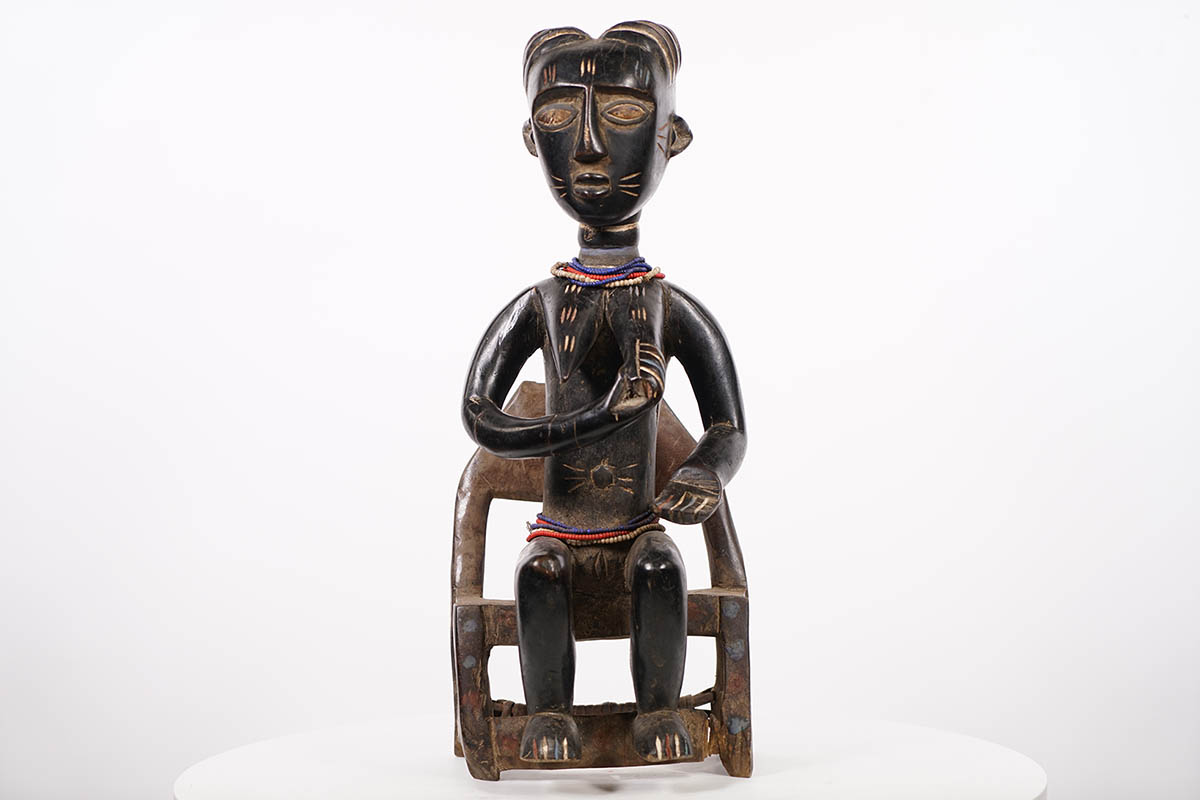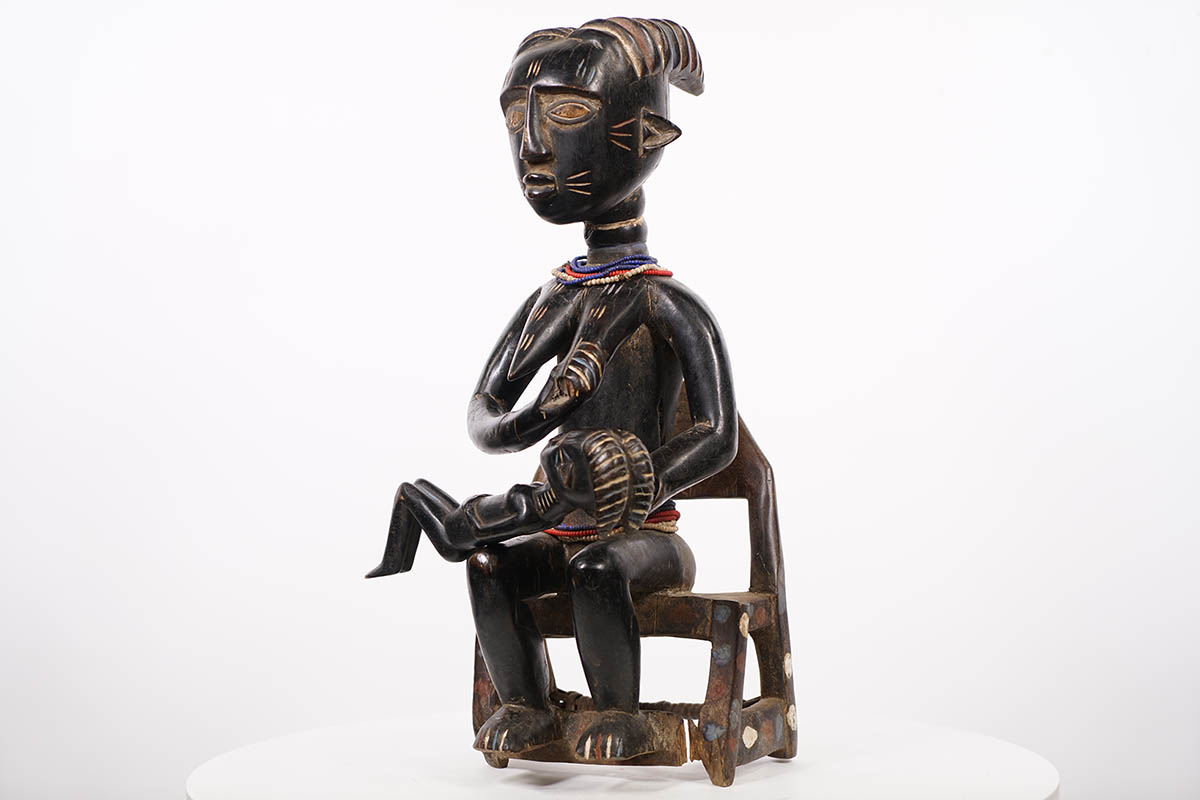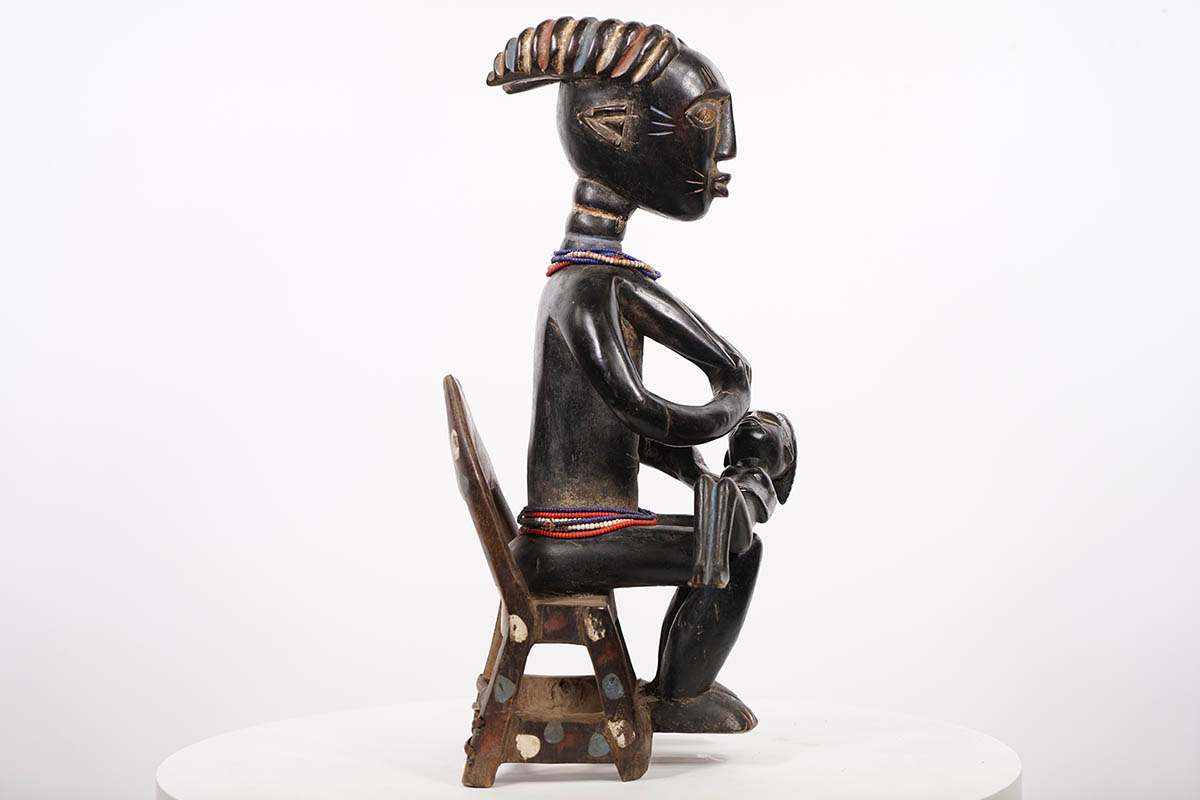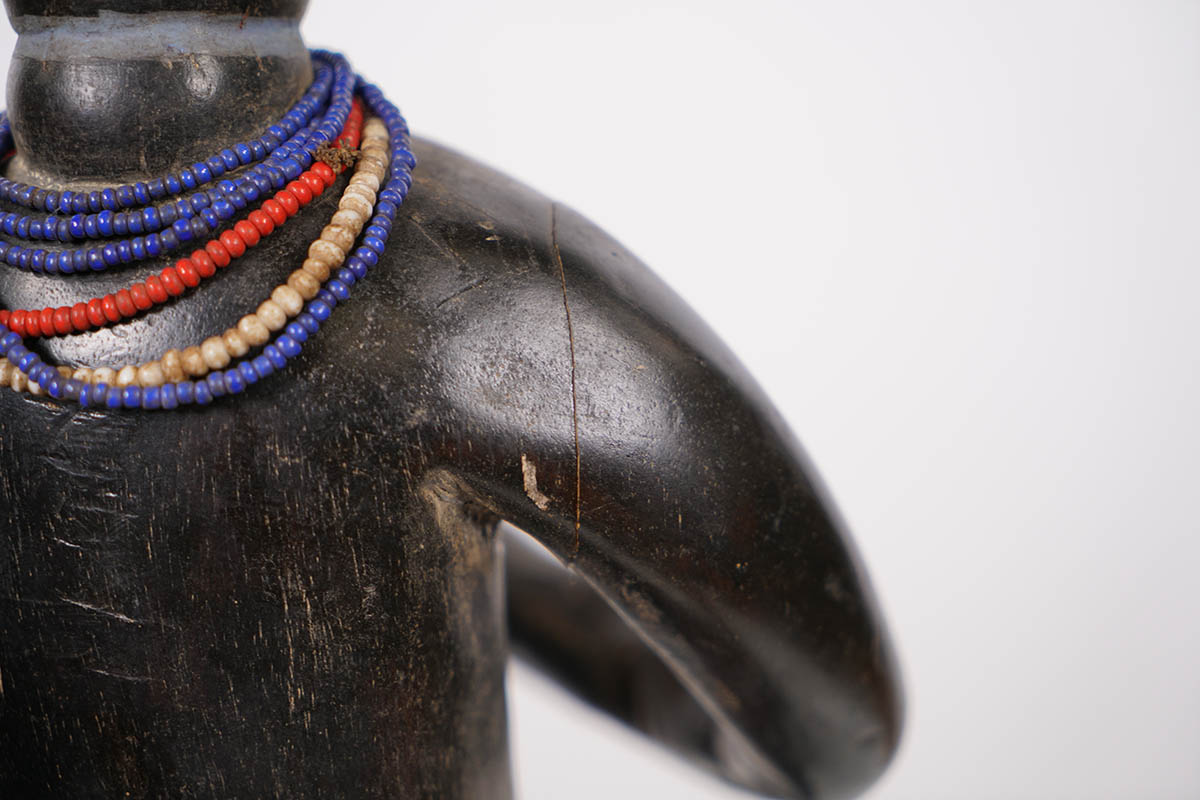This statue was carved in the style of the Asante people from Ghana. The statue depicts a female figure sitting on a chair while she is nursing her child. Both figures have horn-like coiffures and scarification on their faces. The statue measures 20.5 inches tall and weighs 5 pounds. The baby is a separate piece. There is some damage to the front left leg of the chair and there have been repairs to the figure’s right arm. Some cracking and wear and tear throughout – please inspect photos carefully.
Gorgeous Asante Maternity Figure 20.5″ – Ghana – African Art
$177.00
Sold

| Type of Object | Figure |
|---|---|
| Country of Origin | Ghana |
| Ethnicity | Asante |
| Material | Wood, pigment and beads |
| Approximate Age | Unknown |
| Height (Inches) | 20.5" |
| Width (Inches) | 8" |
| Depth (Inches) | 8.5” |
| Weight (Pounds) | 5 lbs |
| Overall Condition | Damage to left chair leg. Repair to right arm. Cracking and wear and tear. |
Tribe Information
About the Asante People
“When they arrived on the coast of Ghana in 1471, Portuguese sailors were astonished by the highly structured kingdoms they encountered. This initial contact, along with the area’s reputation for being wealthy, encouraged Westerners to settle in the region and to trade bronze and European-manufactured objects for Ghanaian gold and slaves.”
“The first area, which lies along the coast of the Gulf of Guinea, is a flat plain covered with shrubs occasionally interrupted by lagoons. It is divided into numerous kingdoms of which the most well known are the Fante and the Ewe. The second area includes the central part of the country. It is a forest area where the most renowned tribes is undoubtedly the Asante (also known as the Ashanti). The Asante tribe, as well as other people living in central and south Ghana, speak the Twi language and collectively form the Akan people. The third area, in northern Ghana, is covered by the savannah and is the habitat of Gur-speaking people whose traditions and religions are still poorly understood.”
Sources:
Baquart, Jean-Baptiste. The Tribal Arts of Africa. New York: Thames and Hudson Inc. 1998. Print.











